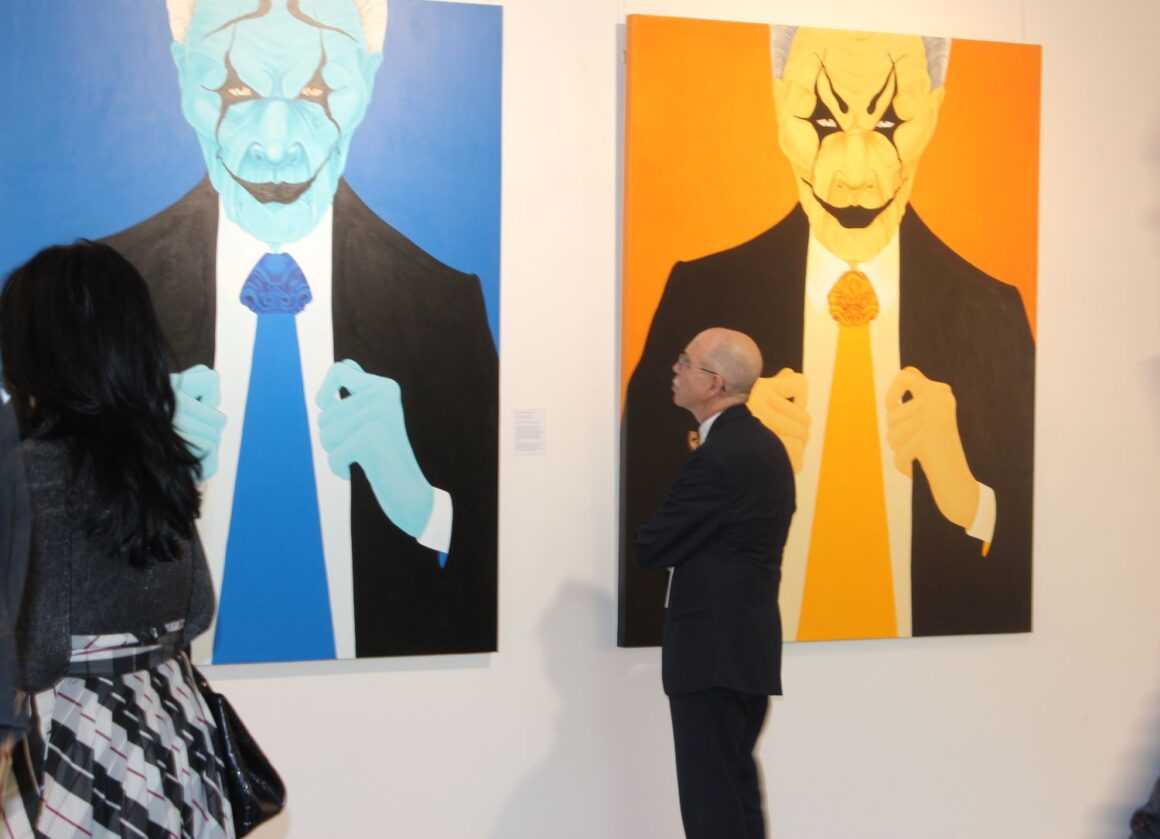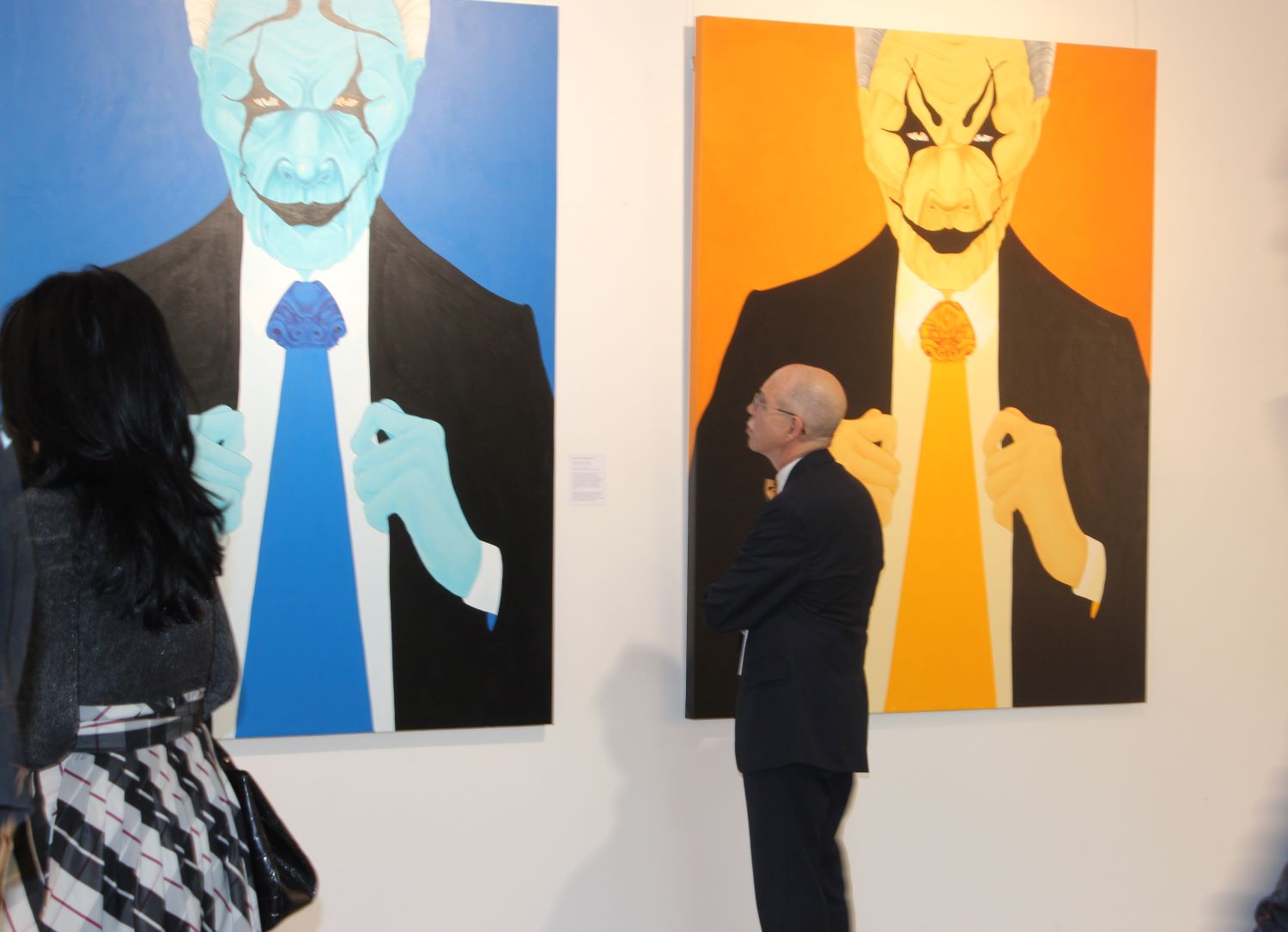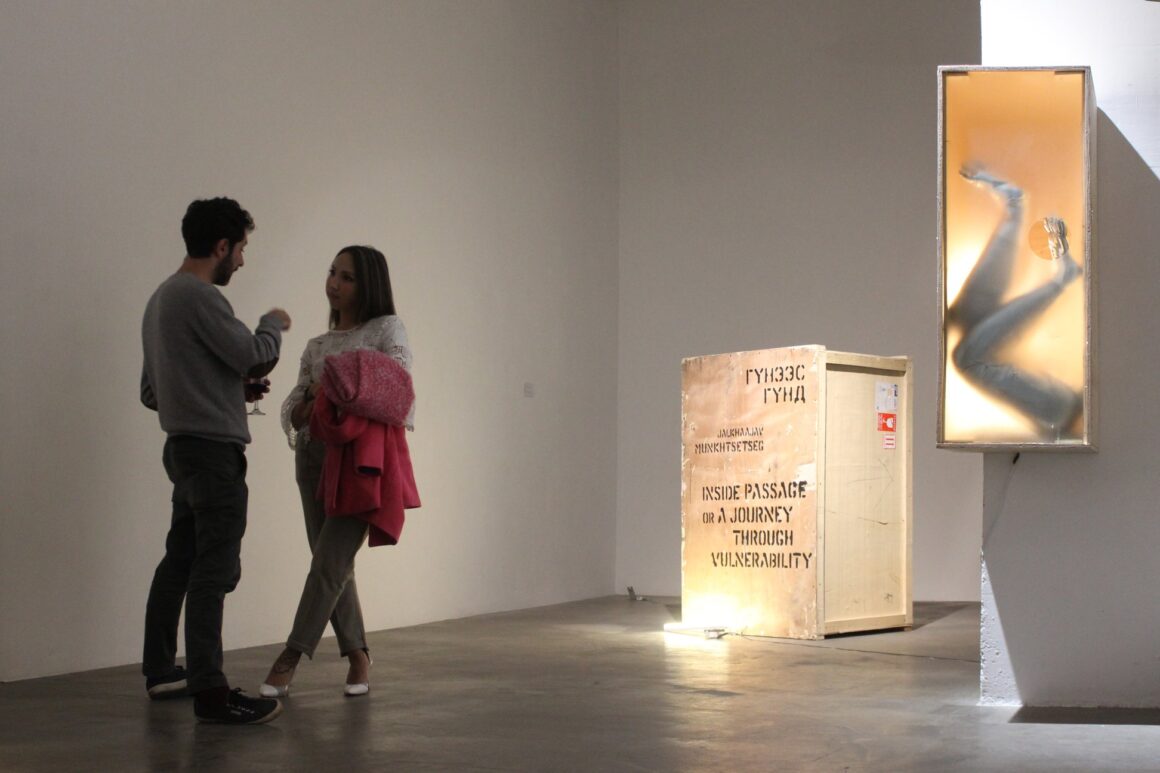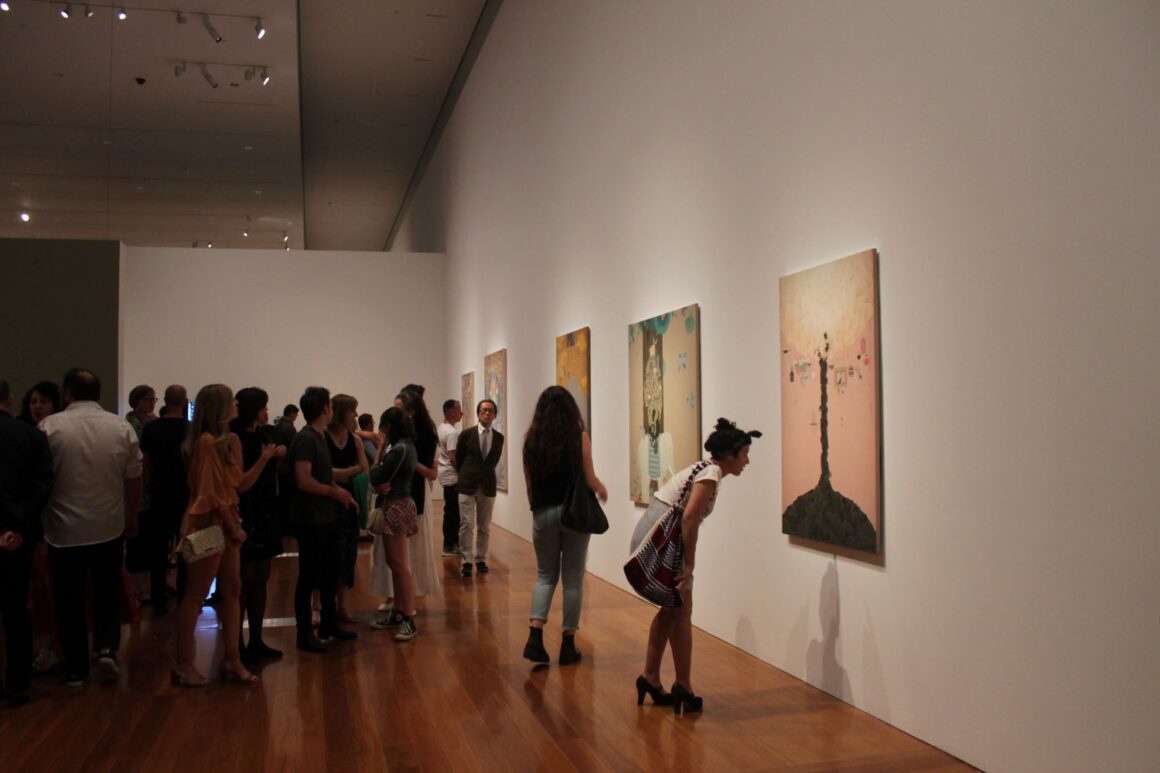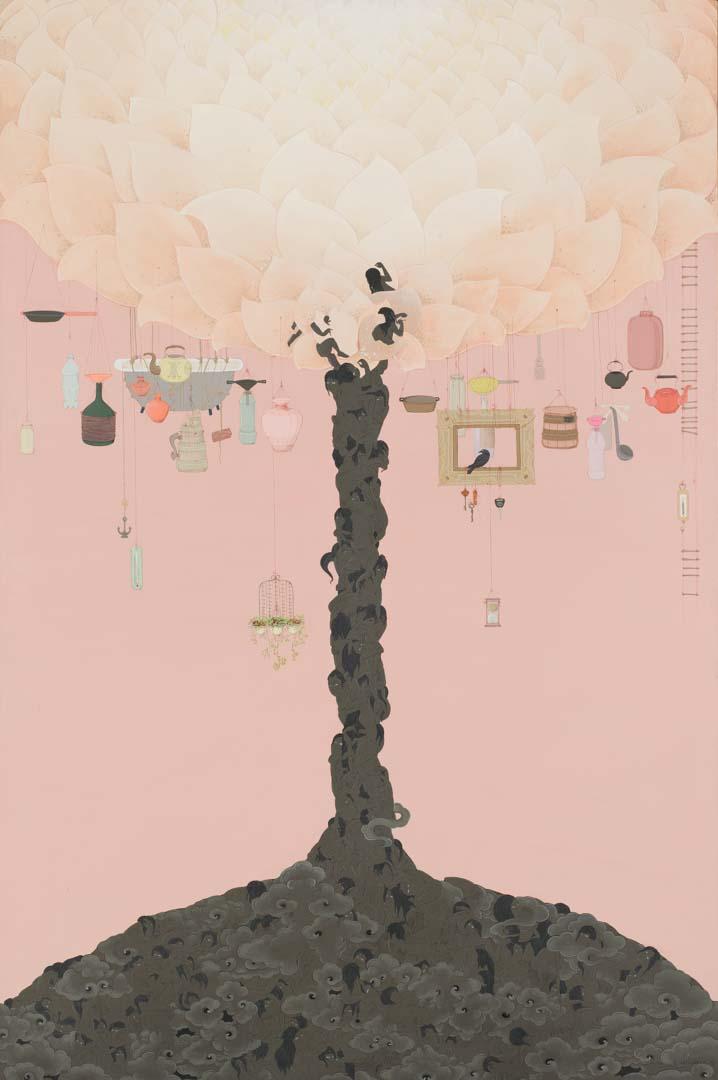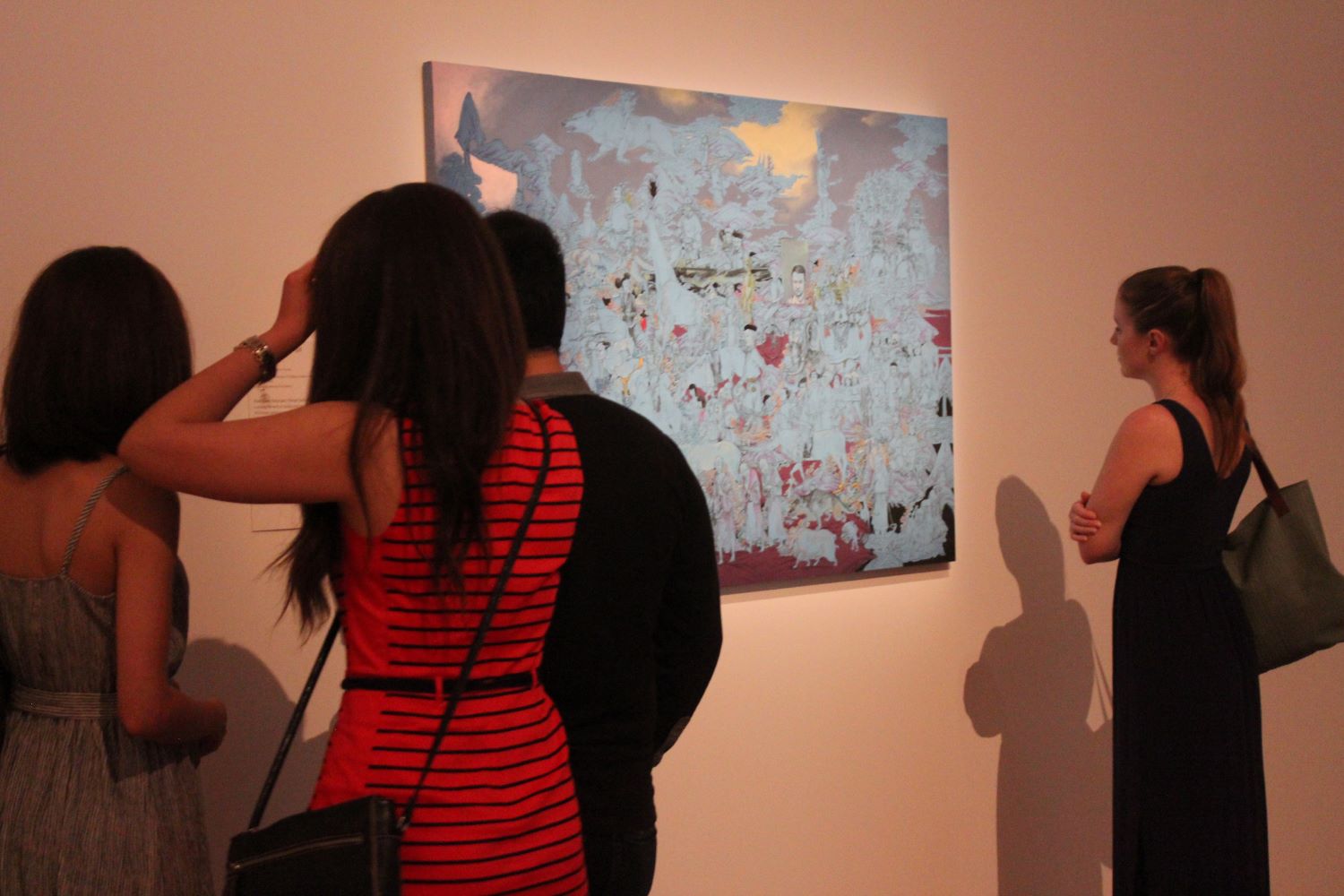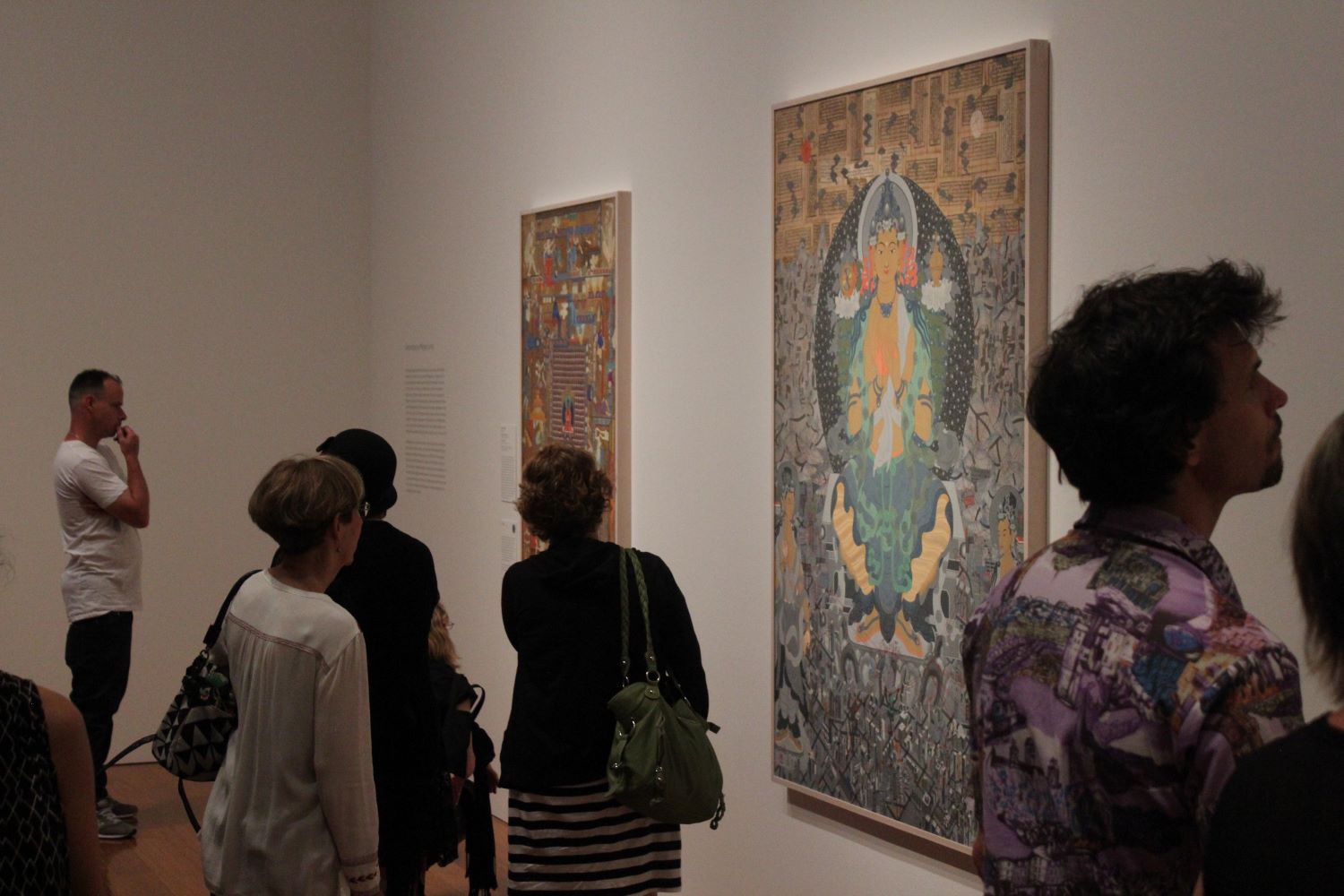SIERRA OF CREATION
Yo.Tuguldur, G.Munkhbolor and B.Bat-Erdene
Jan 20 – Feb 1, 2020
D.Odonchimeg & Ts.Davaajargal | Before the Sky Folds, whilst the Wind is Awakening
Sep 6 – Oct 6, 2017
Life sometimes like the period, before the folding of the sky, somehow the gentle blowing breeze of the wind blows us to different places. Times fly fast, while we are running busy. Thoughts of success and progress give us a pleasure, while we might have all plummeting. An inescapable truth, like everlasting time, is that of humans and nature and the transformations within the living universe; a universe with an unbreakable bond, a universe you cannot capture and reveal and mysterious feelings…
Before the sky folds, whilst the wind awakens…
Sounds and shapes, created through two different eyes, ears and hearts, explore the secret feeling of humans and nature and their transformations and fragmentations. This is what we wish to discuss with you.
ODONCHIMEG DAVAADORJ (b.1990)
When Odie was younger, she wanted to become, a poet, to reach into the depths of the world. Today, drawing became her preferred artistic practice, which she explores through different mediums and techniques. Through her works, she raises questions, where poetic notions of her works lie in? What makes a work more poetic than another? Often, she is interested in universal themes; experiences lived by all human being – regardless of backgrounds and skin color, and feelings that we share as human beings, but each in his or her singularity: love, the relationships between two beings, life and death, departure and return… She says, “I attempt to relate all of this, starting from my own experience, in an autobiographical manner. Not that my life is more interesting than that of others, but simply I see myself as a small fragment of this world and creation is my way of communicating with others. Moreover, intuition is a fundamental element in the way I work.” More here
DAVAAJARGAL TSASCHIKHER (b.1988)
Sound artist, singer and lead of the famous Mongolian ethnic Rock band Mohanik, Davaajargal (known as Davaa) joined the contemporary art movement Human-Nature-Love-Freedom in 2013. In only 4 years of pursuing his artistic career, he became one of the most influential and well known sound artists of Mongolia. He collaborated not only with artists from Human-Nature-Love-Freedom, but also with other Mongolian artists, including T.Enkhbold, the participant of Venice Art Biennale 2015, Les Joynes USA, German artist Christian Faubel and French artist Alexis Paul. Davaa’s sounds are minimal, includes ethnic elements that are pure and powerful. Besides working on sound art, Davaa has also experimented with mixed media works and short films.
Д.Одончимэг, Ц.Даваажаргал | Тэнгэр Нураxаас Өмнө, Салxи Сэрэx Үеэр
2017 оны IX.6-X.6
Амьдрал заримдаа яг л тэнгэр нурах гэж байгаа мэт, салхи сэв сэв сэвэлзээд биднийг хаа нэгтээ дуудах шиг… Бид завгүй гүйлдэн нэг л мэдэхэд өдөр хоног, цаг хугацаа нисэх мэт өнгөрнө. Хэсэг нэгэн нь хожиж, дэвжиж байна хэмээн бодох, гэхдээ магадгүй бид уруудсаар… Хэзээ ч зогсохгүй цаг хугацаа мэт бас нэг үнэн бол хүн ба байгаль, түүний доторхи амьд ертөнцийн хувирал, тэдний тасрашгүй хүйн холбоо, барьж аваад үзүүлж болдоггүй ертөнц, нууцлаг мэдрэмж…
Тэнгэр нурахын өмнө, салхи сэрэх үеэр…
Хоёр өөр нүд, хоёр өөр чих, хоёр өөр зүрх сэтгэлээр дүрс хэлбэр, дуу авиаг нэгэн орон зайнд сүлэлдүүлж хүн ба байгалийн нууцлаг мэдрэмж, түүний хувирал, хувьслын талаар ярилцахыг хүсэв.
ДАВААДОРЖИЙН ОДОНЧИМЭГ (1990 онд төрсөн)
Одие яруу найрагч болж ертөнцийн гүн рүү нэврэн орохыг мөрөөддөг байж. Гэхдээ өнөөдөр тэр зураач болжээ. Тэрээр төрөл бүрийн арга ажиллагаа, хэрэгслийг ашиглан уран бүтээлээ тууривна. Миний ажлуудын яруу тансаг байдал нь хаанаа байна, бүтээлийг хэрхэн илүү тансаг болгох вэ хэмээн үзэгчдээс асууна. Одие арьсны өнгө, гарал үүслээс үл хамааран хүн төрөлхтөнд хамаарах нийтлэг асуудлуудыг хөнддөг. Хүн бүрийн өөр өөрийнхөөр мэдэх зүйлс; хайр, хоёр оршихуйн харьцаа, төрөхүй, үхэл, ирэлт, буцалт… “Би энэ бүхнийг өөрийн амьдралтай холбон, намтарчлан харахыг хүсдэг. Миний амьдрал бусдаас илүү сонин гэдэгтээ ч бус, би бол энэ ертөнцийн жижигхэн хэсэг, харин өөрийн бүтээлээр дамжуулан бусадтай харилцахыг хүссэн юм. Зөн совин бол миний бүтээлийн суурь” хэмээн тэр ярьж байна.
Ц.ДАВААЖАРГАЛ (1988 онд төрсөн)
Уран бүтээлч, хөгжмийн зохиолч, алдарт Моханик рок хамтлагийн гоцлол дуучин Даваaжаргал нь 2013 онд контемпорари урлагийн “Хүн байгаль хайр эрх чөлөө” нэгдэлд нэгдсэнээр дүрслэх урлагийн салбар дахь карьераа эхэлжээ. Асар богино хугацаанд эх орондоо хамгийн нөлөө бүхий, шилдэг дуу авианы уран бүтээлч болж чадсан юм. Тэрбээр “Хүн байгаль хайр эрх чөлөө” нэгдэл төдийгүй бусад уран бүтээлчидтэй хамтран ажиллаж эхэлсэн. Тухайлбал 2015 онд Венецийн Биеннальд оролцсон уран бүтээлч Т. Энхболд, АНУ-ийн Лес Жойнс, Германы уран бүтээлч Кристиан Фаубэл, Францын хөгжимчин Алексис Паул нарыг нэрлэж болно. Даваажаргалын бүтээлүүд нь минимал бөгөөд хүчирхэг, ихэвчлэн байгалийн чимээ, уламжлалт дуу авиаг элемент болгон ашигласан байдаг. Түүнчлэн холимог техник, богино хэмжээний киног сүүлийн үед туршиж байна. Хөгжмийн төрлөөр олон удаа шилдэг бүтээлийн шагналууд хүртэж, тэтгэлэгт хөтөлбөрүүдэд хамрагдаж байв.

